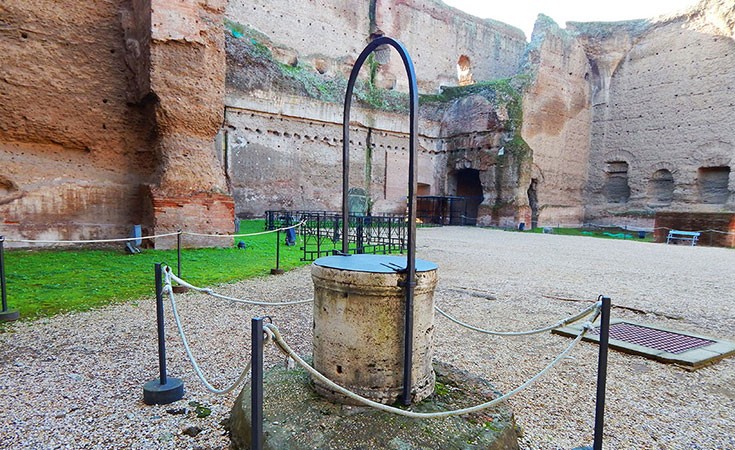
There is little to be seen of the former glory of thermal baths of Caracalla in Rome. But even though the glow has faded, each part of the complex tells a story about the former Roman Empire and is definitely worth peeking into.
The Baths of Caracalla, or the Baths of Antonini (named after the imperial dynasty Antonini), were built by the emperor Caracalla as a part of his polical propaganda - he wanted to be accepted and loved by the people but also to have something monumental to be remembered by. Romans from any social class were allowed to enjoy the time in this complex, whlie other, wealthier citizens visited the Baths of Agrippa, Nerone and Trajan.
The baths were warmed through so-called hypocaustum systems (in ancient Greek hypo means below, while caust means burnt). This is a system of coal or wood burning below the ground level in order to warm up the water that was coming from the old aqueduct. Originally, the baths were decorated with valuable sculptures of which the only preserved ones are a famous statue of a bull (Hellenic sculpture, the largest ever preserved from the ancient times), the statue of Hercules (the Roman statue of Hercules is a magnified copy made in the 3rd century AD, while the original was made in the 4th century BC) and the colossal 4meter high statue of Asclepius, the Greek God of Medicine.
The baths consisted of the central frigidarium (a room with a cold water pool), tepidarium (a room with a pool of lukewarm water), calidarium (a circular-shaped room, with a diameter of 34meters and with a hot water pool), a large public library and two equal but separated rooms for the scrolls in Greek and Latin. The entire complex could host more than 1,500 persons. The tour would end with notatio, an outdoor swimming pool decorated with six enormous granite columns. The only column that survived till the present day is exposed on the Trinita square in Florence (“the column of justice”). Below the baths there were underground rooms that enabled practical management of the complex hidden from the eyes of the passersby. In one of the passages there was a room dedicated to the Mithras cult, the largest one ever found in Rome.
The baths were used till the 6th century, when the entire complex was forcibly occupied by Ostrogoths.
From the 16th century on, many excavations were carried out, to the request of Pope Paolo III. A number of famous sculptures were found, among which the magnificent bust Belvedere, now exposed in Vatican Museum. The bust quickly became the subject of study and admiration of great artists, such as Michelangelo and Raphael.
Ticket prices for the Baths of Caracalla in Rome
(!) Ticket is valid for 7 days for three archeological sites: Terme di Caracalla, Villa Quintili and mausoleum Cecilia Metella.
Regular ticket price is: 6 Euros (€).
Reduced ticket price is: 3 Euros (€), (for EU citizens between 18 and 24 years old).
Free entrance: for those younger than 18 years old.
We advise you to check ticket prices before visiting – check the official website of the Baths of Caracalla.
Working hours of the Baths of Caracalla in Rome
From the last Sunday in October to 15th February working hours are: 09:00 -16:30 (last entrance is one hour before the closing time)
From 16th February to 15th March working hours are: 09:00 – 17:00h.
From 16th March to the last Saturday in March working hours are: 09:00 – 17:30h.
From the last Sunday in March to 31st August working hours are: 09:00 – 19:30h.
From 1st September to 30th September working hours are: 09:00 – 19:00h.
From 1st October to the last Saturday in October working hours are: 09:00 – 18:30h.
(!) Every Monday the last entrance is at 13:00h.
Closed: 1st January, 1st May, 25th December.
We advise you to check working hours before visiting – check the official website of the Baths of Caracalla.
Interesting facts